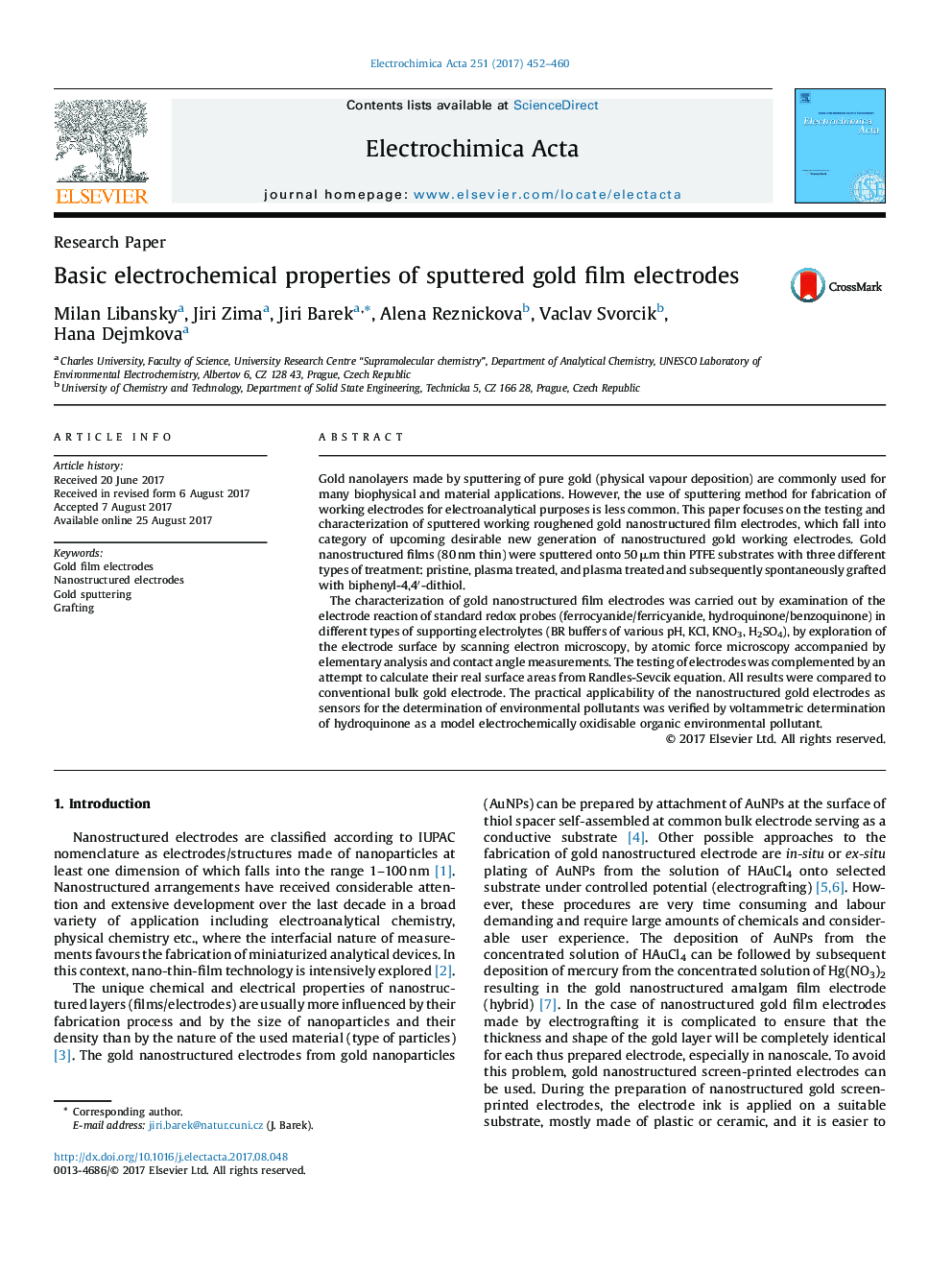| Article ID | Journal | Published Year | Pages | File Type |
|---|---|---|---|---|
| 6469948 | Electrochimica Acta | 2017 | 9 Pages |
Gold nanolayers made by sputtering of pure gold (physical vapour deposition) are commonly used for many biophysical and material applications. However, the use of sputtering method for fabrication of working electrodes for electroanalytical purposes is less common. This paper focuses on the testing and characterization of sputtered working roughened gold nanostructured film electrodes, which fall into category of upcoming desirable new generation of nanostructured gold working electrodes. Gold nanostructured films (80 nm thin) were sputtered onto 50 μm thin PTFE substrates with three different types of treatment: pristine, plasma treated, and plasma treated and subsequently spontaneously grafted with biphenyl-4,4â²-dithiol.The characterization of gold nanostructured film electrodes was carried out by examination of the electrode reaction of standard redox probes (ferrocyanide/ferricyanide, hydroquinone/benzoquinone) in different types of supporting electrolytes (BR buffers of various pH, KCl, KNO3, H2SO4), by exploration of the electrode surface by scanning electron microscopy, by atomic force microscopy accompanied by elementary analysis and contact angle measurements. The testing of electrodes was complemented by an attempt to calculate their real surface areas from Randles-Sevcik equation. All results were compared to conventional bulk gold electrode. The practical applicability of the nanostructured gold electrodes as sensors for the determination of environmental pollutants was verified by voltammetric determination of hydroquinone as a model electrochemically oxidisable organic environmental pollutant.
Graphical abstractDownload high-res image (251KB)Download full-size imageCyclic voltammograms of 1 mmol Lâ1 potassium hexacyanoferrate in BR buffer pH 7 measured on (A) GNFE-Pristine, (B) GNFE-Plasma, (C) GNFE-BPD, and (D) gold bulk electrode at different scan rates (from 10 to 500 mV sâ1).
